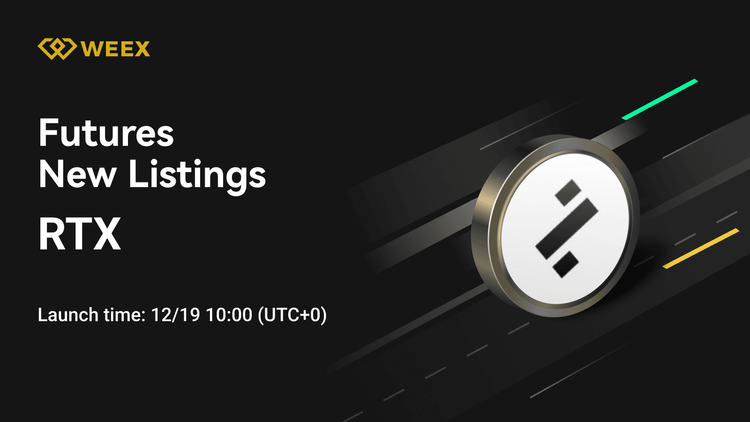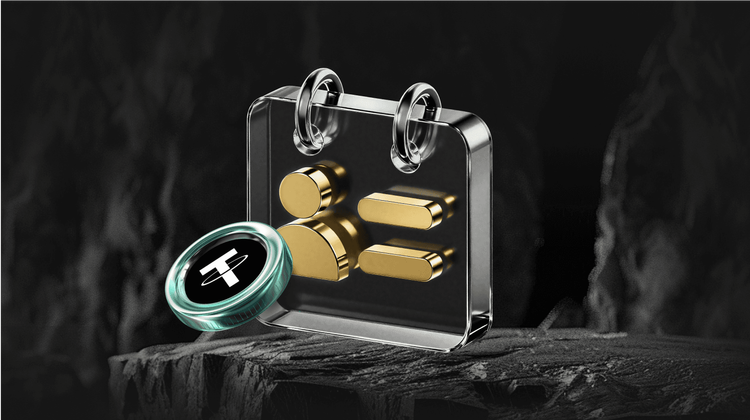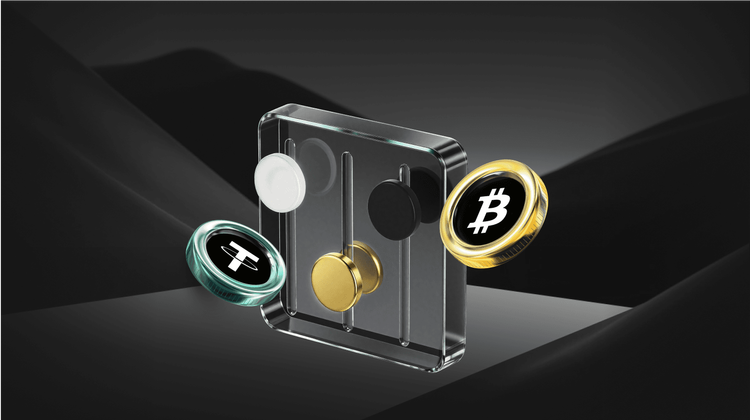How Does Adjusting Your Margin Impact Your Liquidation Price in Leveraged Trading?
Trading with leverage might sound complicated at first, but don’t worry—it’s much simpler than it seems! One of the most important things to understand is your liquidation price. This is the price at which your trade automatically closes if the market moves against you, to prevent further losses. Sounds serious, right? But here’s the good news: you can adjust it by tweaking your margin.
So, what happens when you add or withdraw funds (your margin)? Adjusting your margin directly changes your liquidation price, giving you more room to breathe in those unpredictable markets. And with tools like WEEX Crypto Futures Calculator, you can easily calculate how these adjustments impact your trades and make informed decisions.
Let’s break it down step by step so you can confidently manage your margin and liquidation price—even if you’re brand new to this!
What is the Liquidation Price?
Think of your liquidation price as a safety net. If the market moves too far against your trade, and your margin can no longer cover potential losses, the exchange will automatically close your position to protect you from losing more money.
But here’s the key: you can adjust this safety net!
- Adding more funds (margin) gives you a bigger safety cushion, moving the liquidation price further away.
- Withdrawing funds brings the liquidation price closer, increasing your risk.
Understanding this is a big step in mastering leveraged trading.
Why Adjust Your Margin?
- To Avoid Liquidation: Adding more funds lowers the risk of hitting the liquidation price.
- To Free Up Capital: Withdrawing excess margin can free up funds for other trades, though it increases the risk of liquidation.
- To Manage Risks: Adjusting margin lets you control how much is at stake in a single trade.
How Margin Adjustments Affect Liquidation Price?
The relationship between your margin and liquidation price is straightforward:
Adding Margin: Lowers the liquidation price for long positions (or raises it for short positions). This means more breathing room before the market hits your liquidation price.
Reducing Margin: Raises the liquidation price for long positions (or lowers it for short positions), increasing your risk of liquidation.
Liquidation Price Formula (Simplified)
If you want to know the liquidation price formulas, here’s how to calculate your new liquidation price after adjusting your margin:
For long positions:
New Liquidation Price = (Initial Margin + Added Margin − (Position Size × Entry Price)) ÷ Position Size
For short positions:
New Liquidation Price = (Initial Margin + Added Margin + (Position Size × Entry Price)) ÷ Position Size
A Real Example: Adjusting Margin for a Long Position
Let’s walk through a simple example to see how adjusting your margin affects your liquidation price.
Scenario:
- You open a long position with $1,000 margin.
- You use 10x leverage, which gives you a total position size of $10,000.
- You enter the trade at $30,000 per Bitcoin.
Now, let’s calculate your liquidation price step by step.
Step 1: Calculate Initial Liquidation Price
To find the initial liquidation price, we use this formula:
Liquidation Price = (Margin − (Position Size ÷ Entry Price)) ÷ Position Size
Plugging in the numbers:
- Liquidation Price = ($1,000 − ($10,000 ÷ $30,000)) ÷ $10,000
⬇️ - Liquidation Price = ($1,000 − $0.33) ÷ $10,000
⬇️ - Liquidation Price = $27,000
So, your initial liquidation price is $27,000. If Bitcoin’s price drops to $27,000, your position will be liquidated.
Step 2: Add Margin
Now, you decide to add $500 to your margin. This increases your margin from $1,000 to $1,500.
Step 3: Recalculate Liquidation Price
With the new margin, we recalculate the liquidation price using the same formula:
Liquidation Price = (Margin − (Position Size ÷ Entry Price)) ÷ Position Size
Here’s the math:
- New Liquidation Price = ($1,500 − ($10,000 ÷ $30,000)) ÷ $10,000
⬇️ - New Liquidation Price = ($1,500 − $0.33) ÷ $10,000
⬇️ - New Liquidation Price = $26,500
By adding $500 to your margin, your liquidation price drops from $27,000 to $26,500. This gives you more room for the market to move without hitting your liquidation price.
It means that: by increasing your margin, you’ve lowered your liquidation price, reducing the risk of being liquidated. This adjustment gives you more flexibility and a better chance to ride out market fluctuations.
A Real Example: Adjusting Margin for a Short Position
Let’s look at how adjusting your margin impacts your liquidation price when you’re in a short position.
Scenario:
- You open a short position with $1,000 margin.
- You use 10x leverage, meaning your total position size is $10,000.
- The entry price is $30,000 per Bitcoin.
Now, let’s calculate the liquidation price step by step.
Step 1: Calculate Initial Liquidation Price
For short positions, the formula to calculate the liquidation price is:
Liquidation Price = (Margin + (Position Size ÷ Entry Price)) ÷ Position Size
Here’s the calculation:
- Liquidation Price = ($1,000 + ($10,000 ÷ $30,000)) ÷ $10,000
⬇️ - Liquidation Price = ($1,000 + $0.33) ÷ $10,000
⬇️ - Liquidation Price = $33,000
So, your initial liquidation price is $33,000. If Bitcoin’s price rises to $33,000, your position will be liquidated.
Step 2: Add Margin
Now, you decide to add $500 to your margin. This increases your margin from $1,000 to $1,500.
Step 3: Recalculate Liquidation Price
With the new margin, we recalculate the liquidation price using the same formula:
Liquidation Price = (Margin + (Position Size ÷ Entry Price)) ÷ Position Size
Here’s the updated calculation:
- New Liquidation Price = ($1,500 + ($10,000 ÷ $30,000)) ÷ $10,000
⬇️ - New Liquidation Price = ($1,500 + $0.33) ÷ $10,000
⬇️ - New Liquidation Price = $33,500
By adding $500 to your margin, your liquidation price increases from $33,000 to $33,500, giving you more room to stay in the trade.
Tips for Managing Liquidation Price
Monitor Your Margin Levels: Always keep track of your margin and understand how adjustments affect your liquidation price.
Use Stop-Loss Orders: Protect yourself by setting stop-loss orders to exit trades before the market reaches your liquidation price.
Avoid Over-Leverage: Using high leverage can increase the risk of liquidation. Be cautious and only use leverage you’re comfortable with.
Plan for Volatility: Cryptocurrencies are highly volatile, so ensure you maintain enough margin to handle sudden price swings.
Why Adjusting Margin Matters?
By increasing your margin, you lower the risk of liquidation and give yourself more flexibility to manage your trade. Always recalculate your liquidation price after adjusting your margin to stay in control of your position.
Related article:
How to Use Liquidation Prices to Boost Your Trading Strategy
You may also like

Introducing 0G: Complete Guide to $0G and Airdrop Opportunities
0G ($0G) is the world's first Decentralized AI Operating System (DeAIOS), a modular Layer-1 blockchain designed to power scalable, on-chain AI applications. Learn its tokenomics, ecosystem impact, and how to claim free tokens in the WEEX $50,000 LISA airdrop until Jan.02 2026!

What is Nockchain (NOCK) Coin?
Today, we delve into an exciting new listing: the Nockchain (NOCK) token, freshly available for trading on the…

WEEX Futures Launches RateX (RTX) Coin & RTX USDT Contract
Trade the new RateX (RTX) Coin and RTX USDT perpetual contract on WEEX. Access high leverage and low fees. Register on WEEX for the latest futures listings.

LIQUID Coin Price Prediction & Forecasts for December 2025 – Potential Rally Amid Meme Hype?
Just a day after its launch on December 24, 2025, LIQUID Coin has already stirred up buzz in…

What is Liquid (LIQUID) Coin?
The Liquid (LIQUID) token listed on WEEX is making waves in the crypto world. With trading officially starting…

SOTER (Soter) Coin Price Prediction & Forecasts for December 2025: Can This New Meme Token Sustain Its Launch Momentum?
SOTER (Soter) Coin burst onto the scene on December 24, 2025, as a fresh meme token on the…

What is Soter (SOTER) Coin?
The Soter (SOTER) coin has made a significant splash in the crypto scene with its recent listing on…

Screaming Rubber Chicken (SRCSOL) Coin Price Prediction & Forecasts for December 2025 – Could It Surge 200% Amid Meme Coin Hype?
The Screaming Rubber Chicken (SRCSOL) Coin, a fresh entrant in the meme coin space on Solana, burst onto…

What is Screaming Rubber Chicken (SRCSOL) Coin?
The world of cryptocurrency is buzzing with excitement as a new meme token, Screaming Rubber Chicken (SRCSOL), has…

LIQUID USDT Pair Listed: Trade LIQUID Coin on WEEX Spot
LIQUID USDT spot trading is live on WEEX Exchange. Discover the new LIQUID (LIQUID) Coin listing, check the schedule, and start trading this meme token now.

Trade SRCSOL USDT: Screaming Rubber Chicken Coin on WEEX Spot
Screaming Rubber Chicken (SRCSOL) Coin is new listed on WEEX Exchange. Access the SRCSOL USDT trading pair now. Discover the viral meme token premiere.

SOTER USDT Spot Trading Now Live on WEEX Exchange
Soter (SOTER) Coin is newly listed on WEEX Exchange. Start SOTER USDT spot trading today with the latest Meme token from the Soter Ecosystem.

Nockchain (NOCK) Coin Price Prediction & Forecasts for December 2025: Surging 14% Amid Meme Token Buzz
Nockchain (NOCK) Coin has just hit the scene on the Base chain, launching today at 12:00 UTC on…

What is Nock (NOCK) Coin?
Nock (NOCK) Coin is the native asset of the Nockchain ecosystem, a unique blockchain designed to merge community…

JPMorgan Chase Tokenized Stock (Ondo) (JPMON) Coin Price Prediction & Forecasts for December 2025 – Steady Climb Post-Launch
The JPMorgan Chase Tokenized Stock (Ondo) (JPMON) Coin just hit the market on December 23, 2025, offering tokenized…

REALGARRYTAN Coin Price Prediction & Forecasts for December 2025 – Fresh Launch Sparks Meme Token Rally Potential
The REALGARRYTAN Coin, a new meme token tied to Garry Tan and launched on the Base chain just…

What is RealGarryTan (REALGARRYTAN) Coin?
The cryptocurrency market constantly evolves, offering new investment opportunities for enthusiasts and traders. Recently, the RealGarryTan (REALGARRYTAN) token…

Walmart Tokenized Stock (Ondo) (WMTON) Coin Price Prediction & Forecasts for December 2025 – Could It Rebound After Recent Dip?
As of December 2025, Walmart Tokenized Stock (Ondo) (WMTON) Coin has just hit the market, offering tokenized exposure…
Introducing 0G: Complete Guide to $0G and Airdrop Opportunities
0G ($0G) is the world's first Decentralized AI Operating System (DeAIOS), a modular Layer-1 blockchain designed to power scalable, on-chain AI applications. Learn its tokenomics, ecosystem impact, and how to claim free tokens in the WEEX $50,000 LISA airdrop until Jan.02 2026!
What is Nockchain (NOCK) Coin?
Today, we delve into an exciting new listing: the Nockchain (NOCK) token, freshly available for trading on the…
WEEX Futures Launches RateX (RTX) Coin & RTX USDT Contract
Trade the new RateX (RTX) Coin and RTX USDT perpetual contract on WEEX. Access high leverage and low fees. Register on WEEX for the latest futures listings.
LIQUID Coin Price Prediction & Forecasts for December 2025 – Potential Rally Amid Meme Hype?
Just a day after its launch on December 24, 2025, LIQUID Coin has already stirred up buzz in…
What is Liquid (LIQUID) Coin?
The Liquid (LIQUID) token listed on WEEX is making waves in the crypto world. With trading officially starting…
SOTER (Soter) Coin Price Prediction & Forecasts for December 2025: Can This New Meme Token Sustain Its Launch Momentum?
SOTER (Soter) Coin burst onto the scene on December 24, 2025, as a fresh meme token on the…
Popular coins
Customer Support:@weikecs
Business Cooperation:@weikecs
Quant Trading & MM:[email protected]
VIP Services:[email protected]
